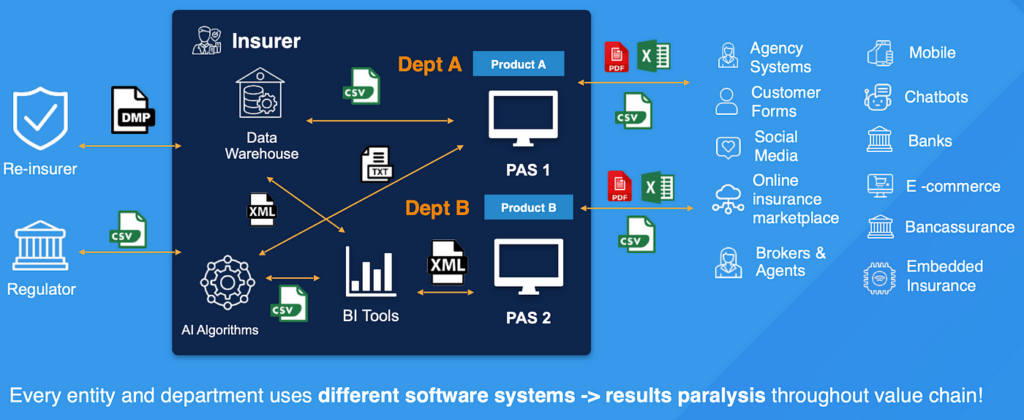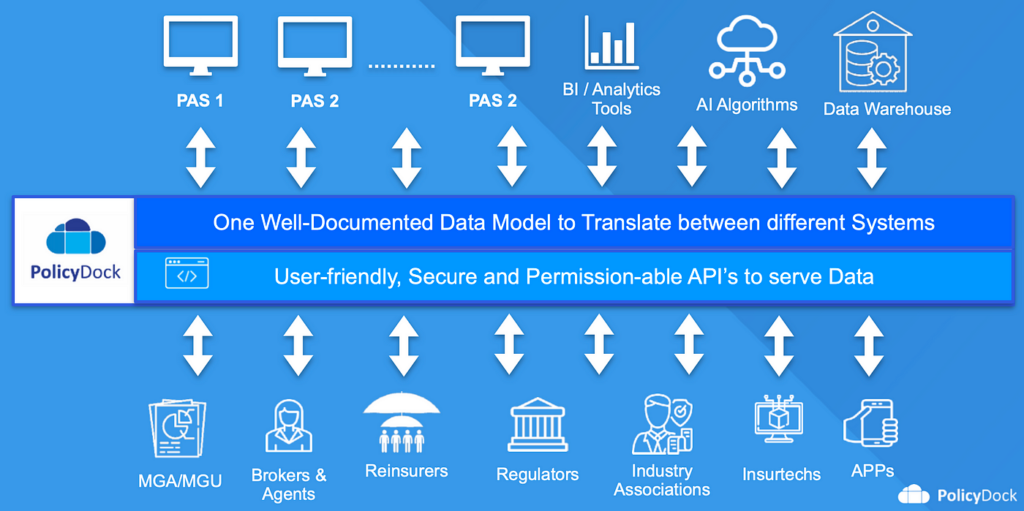Do you keep on hearing that ‘data is the new oil’, and every time you pick up a new insurance industry report the words that always keep sticking out is digital transformation.
Yet, when we spoke to one successful venture investor, he asked us ‘With so many digital solutions already out there, why are they not getting traction or why does insurance still work on paper?’
I think to answer this question, you have to see it from the insurer’s view (see below):

Every time you add a system, you also add complexity to operations. Each partner connects with each system, and within each insurer there’s a different system connecting to each other system using different file formats in different file formatting mainly because each system was sold by a different vendor. If you want to make a change to the system, you have to make a behavioral change within the organization (which we argue sometimes is even tougher).
Then to integrate a new system, there is the ‘project within the project’, meaning long integration projects which by the time the new technology is implemented, it could be outdated. This results in paralysis throughout the value chain as you can imagine. Here’s a podcast episode further articulating the problem.
If data is the new oil, then there’s different grades of oil (e.g. refined vs. crude) just like there’s different grades of data, i.e. unstructured vs. structured. Structured data basically means you know exactly what, how, where the data is stored and more importantly, how to use it. You can change its state by performing actions on it (e.g. from a proposal to a quote) and it is well-documented to be used throughout the organization. Want to know how unstructured data becomes structured data, read our previous post ‘Is your data dead and dirty’.
At PolicyDock, we believe that you should structure the data as it comes in, and we serve the data via user-friendly, secure and well-documented API’s (that can perform the full policy administration life cycle). That’s so your organization looks more like this:

Having one well-documented data model, which is our Policy Data Platform, allows for all types of systems to integrate with each other seamlessly and easily in a transparent fashion. No more ‘projects within projects’ or multitudes of explanations when it comes to understanding what the data actually means e.g. ‘is 0 for male, 1 for female or vice versa’. Make system and tech vendors conform to your standards, not you bending the organization to their standards.
Imagine the efficiency that is unlocked when communication of data is clear, transparent, easy-to-understand and less burdensome within the organization, of course, in real-time. Moreover, imagine the flexibility you will have in choosing your own digital destiny and never beholden to one vendor (who typically hides their data standards to make you more dependent on them), without having to add further complexity.
Unlock this future today with PolicyDock: [email protected]